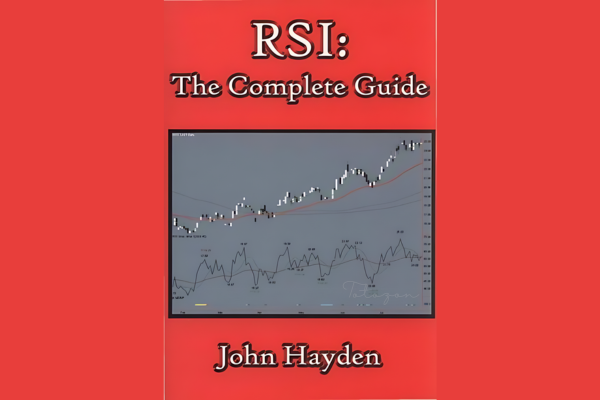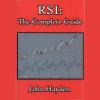RSI. The Complete Guide with John Hayden
$4.00
File Size: Coming soon!
Delivery Time: 1–12 hours
Media Type: Online Course
RSI: The Complete Guide with John Hayden
Introduction
Welcome to our comprehensive guide on the Relative Strength Index (RSI) as explored by John Hayden. The RSI is a powerful tool used in technical analysis to measure the speed and change of price movements. This guide will provide an in-depth look at RSI, its applications, and how John Hayden’s insights can help you master this indicator.
What is RSI?
Definition of RSI
The Relative Strength Index (RSI) is a momentum oscillator that measures the speed and change of price movements. It oscillates between 0 and 100 and is typically used to identify overbought or oversold conditions in a market.
History of RSI
Developed by J. Welles Wilder Jr. in 1978, RSI has become one of the most widely used momentum indicators in trading.
Understanding RSI
RSI Calculation
The RSI is calculated using the following formula: RSI=100−(1001+Average GainAverage Loss)\text{RSI} = 100 – \left( \frac{100}{1 + \frac{\text{Average Gain}}{\text{Average Loss}}} \right)RSI=100−(1+Average LossAverage Gain100)
Interpreting RSI Values
- 0-30: Indicates an oversold condition.
- 30-70: Represents a neutral market.
- 70-100: Suggests an overbought condition.
John Hayden’s Approach to RSI
Hayden’s Enhancements
John Hayden has made significant contributions to the understanding and application of RSI. He emphasizes the importance of considering RSI in conjunction with other indicators and market conditions.
Key Concepts from Hayden
- RSI Range Rules: Hayden introduces the concept of RSI range rules, where RSI values behave differently in bullish and bearish markets.
- Dynamic Zones: He advocates for dynamic zones instead of fixed overbought and oversold levels, which adjust based on market conditions.
Practical Applications of RSI
Identifying Trend Reversals
RSI can help traders spot potential trend reversals by identifying overbought or oversold conditions.
Divergence Analysis
Divergence between RSI and price can signal an upcoming reversal. For example, if the price is making new highs but RSI is not, it could indicate a potential bearish reversal.
RSI and Support/Resistance
Using RSI to identify support and resistance levels can enhance trading strategies.
Advanced RSI Strategies
RSI with Moving Averages
Combining RSI with moving averages can provide more reliable signals. For instance, a moving average crossover with RSI confirmation can be a strong trading signal.
RSI Trendlines
Drawing trendlines on RSI itself can help identify breakout points and trend reversals.
RSI and Fibonacci Retracement
Using RSI in conjunction with Fibonacci retracement levels can improve the accuracy of trade entries and exits.
Common Mistakes to Avoid
Ignoring Market Conditions
RSI should not be used in isolation. Always consider overall market conditions and other indicators.
Over-reliance on Fixed Levels
Relying solely on the 30 and 70 levels can lead to missed opportunities. Use dynamic levels based on market conditions.
Tips for Effective RSI Trading
Set Alerts
Use alerts to get notified when RSI reaches certain levels, so you can act quickly.
Backtesting Strategies
Always backtest your RSI strategies on historical data before applying them in live markets.
Continuous Learning
Stay updated with the latest research and strategies related to RSI.
Conclusion
The RSI is a versatile and powerful tool in technical analysis. John Hayden’s enhancements and insights offer valuable strategies for effectively using RSI. By understanding and applying these concepts, traders can improve their market analysis and make more informed trading decisions.

Commonly Asked Questions:
- Business Model Innovation: Accept the truth of a legitimate business! Our strategy is organising a group buy in which participants share the costs. We use these cash to acquire popular courses from sale pages and make them available to people with limited financial resources. Despite the authors’ worries, our clients love the cost and accessibility we give.
- The Legal Environment: Yes or No The legality of our activity is ambiguous. While we don’t have specific permission from the course authors to resell the material, there is a technicality at work. The author did not specify any limits on resale when purchasing the course. This legal intricacy is both an opportunity for us and a boon for individuals looking for low-cost access.
- Quality Control: Uncovering the Truth
Getting to the heart of the issue – quality. Purchasing the course straight from the sale page guarantees that all documents and resources are the same as those obtained through traditional channels.
However, we distinguish ourselves by going beyond personal research and resale. It is crucial to note that we are not the official course providers, which means that the following premium services are not included in our package:
- There are no scheduled coaching calls or sessions with the author.
- Access to the author’s private Facebook group or web portal is not permitted.
- No access to the author’s private membership forum.
- There is no direct email support available from the author or their team.
We operate independently, with the goal of bridging the pricing gap without the extra services provided by official course channels. Your comprehension of our distinct approach is much appreciated.
Be the first to review “RSI. The Complete Guide with John Hayden” Cancel reply
You must be logged in to post a review.
Related products
Forex Trading
Forex Trading
Forex Trading
The Complete Guide to Multiple Time Frame Analysis & Reading Price Action with Aiman Almansoori
Forex Trading
Forex Trading
Forex Trading
Forex Trading
Forex Trading
Quantamentals – The Next Great Forefront Of Trading and Investing with Trading Markets
Forex Trading
Forex Trading
Forex Trading
Forex Trading






















Reviews
There are no reviews yet.